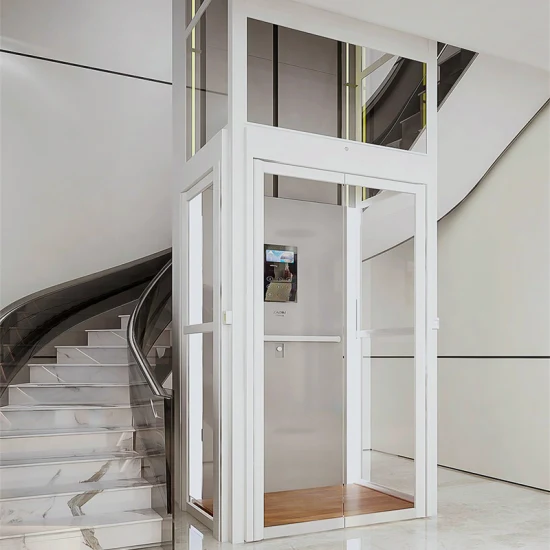Leading Lift Companies in London: Supplying Exceptional Solution and Assistance
Leading Lift Companies in London: Supplying Exceptional Solution and Assistance
Blog Article
Diving Into the Globe of Lifts: Usual Issues Encountered by Various Lift Mechanisms
As we navigate through the vertical transport systems of contemporary structures, elevators stand out as an essential element of our daily lives. From hydraulic lifts to traction systems and machine-room-less layouts, each lift kind comes with its collection of common problems.
Hydraulic Elevators
Hydraulic elevators, commonly favored for low-rise structures, utilize fluid pressure to regulate the movement of the lift cars and truck (lift repair companies). This system includes a hydraulic pump pressing oil right into a cyndrical tube, creating the elevator to relocate the preferred instructions. While hydraulic lifts are recognized for their smooth and peaceful procedure, they do include their very own set of common problems
One prevalent trouble with hydraulic elevators is oil leakage. The seals in the hydraulic system can put on out with time, bring about oil seepage. This not just develops a mess however can additionally impact the lift's efficiency if left unaddressed. Furthermore, problems with the control system, such as defective shutoffs or a malfunctioning pump, can trigger interruptions in the elevator's motion.
Routine maintenance and prompt repair work are necessary to guarantee the smooth performance of hydraulic lifts. By resolving these typical issues proactively, building proprietors can decrease downtime and ensure the safety and effectiveness of their vertical transportation system.
Grip Elevators
When considering vertical transport systems in structures, an additional typical type in addition to hydraulic lifts is the grip lift. Grip lifts operate utilizing a system of ropes and weights that move the elevator cars and truck by clutching onto the hoist ropes. This system enables for smoother and much faster upright transport contrasted to hydraulic systems.
One of the common problems faced by traction lifts is rope wear. The consistent motion of the ropes within the grip system can result in wear and tear gradually, potentially causing the lift to breakdown or come to be harmful for use. Routine inspections and upkeep of the ropes are vital to make certain the lift's correct functioning and safety and security.
Another problem that grip lifts may encounter is connected to the control system. Issues with the control system can cause issues such as unpredictable activity, hold-ups in feedback times, or even total closures. Normal testing and maintenance of the control system are important to avoid such issues and guarantee the lift's dependability.
Machine-Room-Less (MRL) Lifts

Among the vital parts of MRL lifts is the small gearless grip device that is set up within the hoistway. This machine effectively drives the elevator automobile without the demand for large devices located in standard grip elevators. In addition, MRL lifts usually use a counterweight system to stabilize the car, more boosting their energy effectiveness.
Despite their benefits, MRL elevators might face obstacles connected to maintenance and fixing because of the confined room for equipment installation. Availability for servicing elements within the shaft can be restricted, calling go to these guys for specialized training for technicians. Appropriate upkeep timetables and regular assessments are vital to guarantee the continued smooth procedure of MRL elevators.
Overloading and Weight Limit Issues
Are elevators furnished to handle excess weight loads efficiently and securely? Overloading and weight limitation concerns are vital concerns in lift procedures. Elevator manufacturers style lifts with details weight capacities to make certain passenger safety and security and equipment longevity. Exceeding these weight restrictions can result in various issues, including mechanical failures, delays, and safety and security dangers.
When elevators are overloaded, it places excessive strain on the electric motor, cable televisions, and other components, potentially triggering malfunctions or malfunctions. If they discover excess weight, security systems such as sensors and overload sensing units are in area to protect against elevators from relocating. Furthermore, exceeding weight restrictions can lead to enhanced power intake and deterioration on the elevator system.
To mitigate overloading concerns, building supervisors should prominently show weight limits in elevators and inform passengers on the value of sticking to these constraints - lift repair companies. Regular maintenance checks by certified professionals can additionally assist guarantee that elevators are operating within risk-free weight criteria. By dealing with overloading and weight limitation problems proactively, structure proprietors can enhance lift security and effectiveness
Electrical System Failures
Exceeding weight limitations in lifts can not only lead to mechanical concerns but also possibly contribute to electric system failures within the lift infrastructure. Electric system failures are an essential issue in elevator operation, as they can trigger unanticipated closures, malfunctions, or also safety threats.
In addition, power rises or changes in the electrical supply can likewise disrupt the lift's operation, impacting its performance and safety and security. These electric disruptions can harm sensitive elevator parts such as control panels, circuit card, or sensing units, bring about system failings. Normal upkeep and assessments are crucial to determine and attend to prospective electrical concerns quickly, guaranteeing the secure and effective procedure of lift systems. By sticking to weight limits and conducting routine electric system checks, structure owners can mitigate the risk of electric failures in elevators.
Verdict

Hydraulic lifts, typically liked for low-rise buildings, use fluid stress to control the movement of the lift automobile.When taking into consideration vertical transport systems in buildings, another typical type apart from hydraulic lifts is imp source the traction lift. Grip elevators operate using a system of ropes and weights that move the elevator car by gripping onto the hoist ropes. Unlike typical elevators that require a separate machine space to house the equipment, MRL elevators integrate many of the parts within the shaft, eliminating the demand for a committed machine space.In conclusion, elevators deal with usual issues such as hydraulic breakdowns, traction system failings, and electric system problems.
Report this page